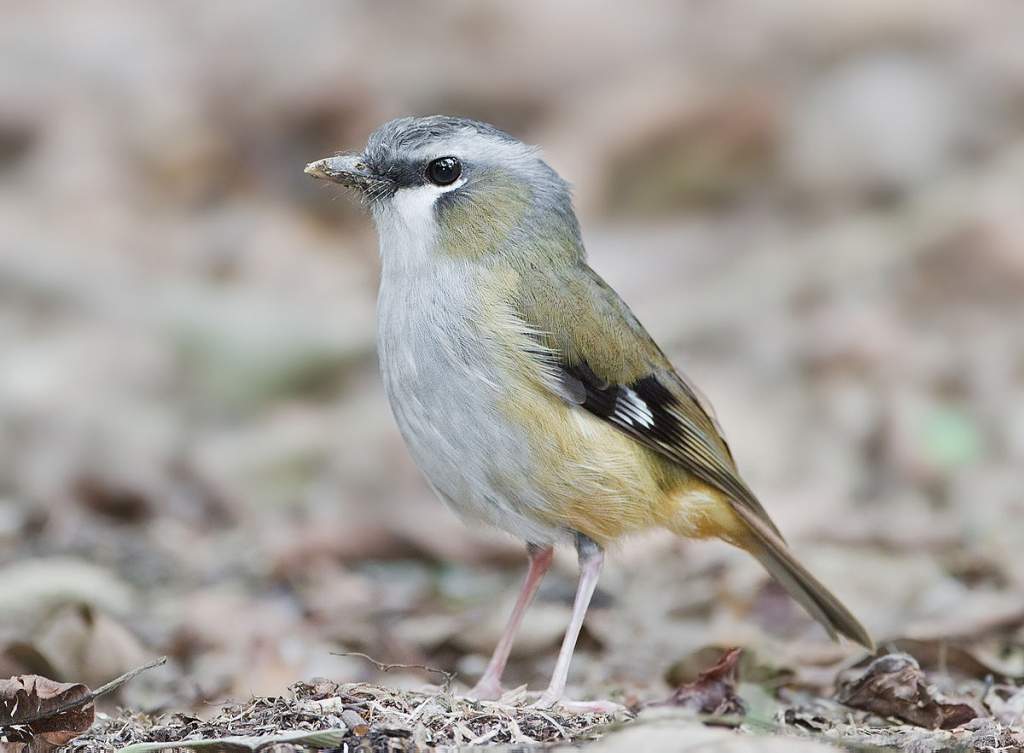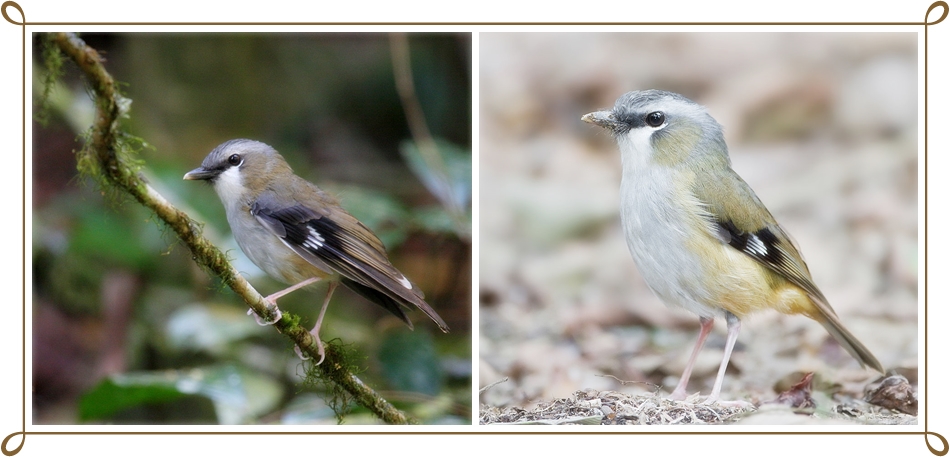A bird in the family Petroicidae, the Grey-headed Robin (Heteromyias cinereifrons) has long pale legs. A ground-foraging bird, it feeds on the ground. During the substage of montane rainforest in northeastern Queensland, this species exists singly or in territorial pairs or small family groups of three or four.
During feeding, it hops quietly along the forest floor for several meters, pausing, picking up prey, and then moving on. A majority of its diet consists of insects, spiders, grubs, and snails. The Grey-headed Robin is similar to other related yellow robins in that it hunts from low branches in the forest substage, often at the edge of tracks or clearings where it darts to pick up food, then returns to its perch in cover.
Occasionally, it even catches termites on the wing, which are slow-flying insects. Most of the time, the bird sits motionless upright on its perch between sallies for food for long periods of time. It is common for the bird to hunt after dusk, which may be an adaptation to its large eyes. Many of its sorties are within about a meter of the ground, where it clings to the sides of vertical trunks.

Read More – Mangrove Robin (Peneothello pulverulenta)
Black-eared Robin and Ashy-fronted Robin are other names for this species. Approximately 170-180 mm is the length of the Robin. There is no difference between the sexes. As its name suggests, the crown and nape of the grey-headed robin are dark gray.
At the base of the tail, the back and shoulders are olive-brown, while the rump is tawny, shading into the chestnut. Grey-brown is the color of the rest of the tail. There are two white bars on each wing; the rest is olive-brown with black edges.
Dusky lords and chin; grey-brown cheeks darkening to black under the eyes. A white line runs from the throat to the line under the eye. Over the breast, the underparts are white, washed gray, and tawny on the flanks and under the tail. The eye is brown-black.
The bill is black with a bone-white tip. Creamy flesh covers the feet. Immature adult juveniles have rusty brown faces and underparts with white blotches; wing bars are present. There is a soft, repeated, short piping whistle, on the same pitch, made by both sexes in contact with the bird. In alarm, they chatter and chirp.
The Grey-headed Robin sings a loud, thin whistle followed by two or three shorter notes at a lower pitch, advertising territory throughout the year. Nesting and breeding take place from August to January. A coarse cup made of thin twigs, roots, leaf skeletons, and fiber, lined with fine fiber, placed up to 5 meters above the ground in a crotch or fork, often made of rattan.
The birds lay one or two eggs, which are cream buff to pale green in color, and brown on the larger end. Approximately 26 x 20 mm, the eggs are rounded-oval. Grey-headed Robins inhabit mountain rainforests above 500 meters on tablelands between Helenvale and Mt Spec, in northeastern coastal Queensland to sea level near Cape Tribulation, and in montane New Guinea. Currently, there are five to six races, but only one is endemic to Australia.
Read More – The Eastern Yellow Robin







